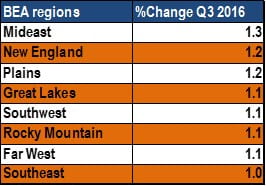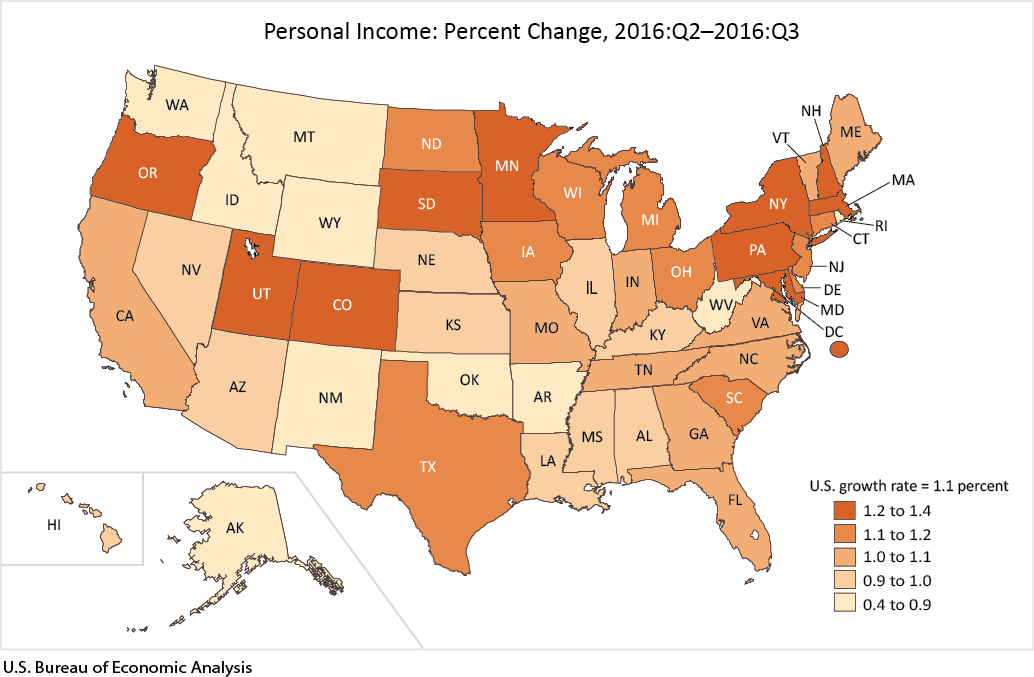BEA Releases State Income Changes Q3 2016. All States Show Growth for Second Consecutive Quarter
The U.S. Bureau of Economic Analysis (BEA) released its figures of state income changes for the third quarter of 2016. The aggregate change of personal income for all U.S. states was an increase of 1.1% over the third quarter of 2016. This is a slightly lower rate than the 1.2% growth in the second quarter. All fifty states saw personal income growth in the third quarter, the second consecutive quarter this broad growth event has occurred.
The release shows how much a state’s income has risen or fallen in the third quarter of 2016. The BEA measures state income as the sum of net earnings by place of residence, property income, and personal current transfer receipts. Net earnings are wages, salaries, and current benefits like employer provided healthcare. Property income includes rental income, but also stock dividends and other interest income. Current transfer receipts include any benefits received from Federal, state, or local government, as well as private pensions.
It is always interesting to look for any regional patterns of growth. The Mideast region is slightly ahead of the rest of the pack, but the percentage increases in regional incomes are stacked rather closely together, reflecting the across the board growth we see this quarter.
The map below, provided by the BEA, reflects the broad growth pattern. In contrast with the second quarter, which saw the largest growth clustered in the Rocky Mountain and Pacific Coast areas, the third quarter has seen particularly strong in the Great Lakes and northeast areas of the country. South Dakota and the District of Columbia saw the greatest growth in Q3, with income growing 1.4%. Oklahoma saw the slowest growth, although still growing at 0.4%.
Click to Expand
It is important to note that this report does not include the wage-growth numbers commonly reported by the media. Those numbers are collected and reported by the Bureau of Labor Statistics, and the focus is specifically on wage earners. The report on income from the Bureau of Economic Analysis takes a much broader look at income overall. Access to the BEA’s full data on state income changes Q3 2016 can be found here.
All data provided by the U.S. Bureau of Economic Analysis
by Jeffrey L Garceau


